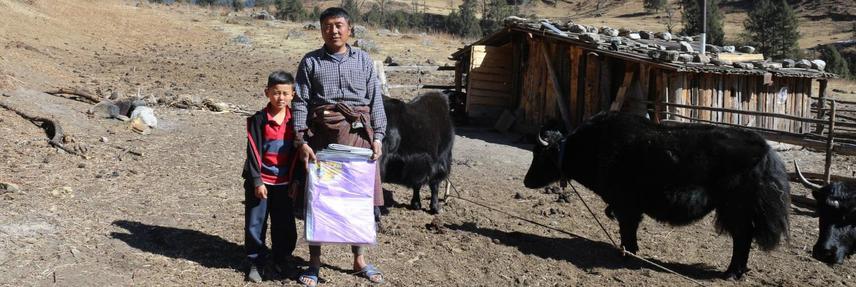Kinley Tenzin
The main goal of this project is Conservation of Snow Leopard in its harmonic ho-existence with the Yak herders. Snow leopard share their home range with the Yak herders, both demands same kind of geographical and climatic characteristics. Their existence in a same range creates interaction or conflict in terms of livestock depredation by the Snow Leopard and diminishing its prey species by excessive grazing by the Yaks. Therefore, this project will aim to assess the severity of the conflict, provide conflict mitigation measures and explore further conservation intervention needs.

The snow leopard (Panthera uncia, Schreber 1775) is a globally endangered wild cat (IUCN 2013), listed under Appendix I of the Convention on International Trade in Endangered Species of Wild Fauna and Flora (CITES). This magnificent carnivore is found in 12 Asian countries, including Bhutan. The endangered snow leopard is considered keystone species in the mountain ecosystems (Li, Wang, & Lu, 2013).

Snow leopards are considered as an apex predator, whose survival depends on the healthy population of its prey species (Mccarthy & Chapron, 2014). It shares their home with Yak herders, who also require healthy range lands to sustain their livestock and their livelihood. Population of Snow Leopard is declining due to killing by herders as livestock predator, poaching for fur and loss of habitats. Tiger is almost wiped out from its natural habitat due to heavy poaching; now alternate hunt down could be Snow Leopard (Brunton & Barraclough, 2016).
Bhutan is also home to elusive Snow Leopard. Study on snow leopard and its interaction with yak herders is very limited in Bhutan. Presence of snow leopard in present study has been confirmed through camera trap survey and the livestock depredation cases reported by the Yak herders. There is information gap in extent of livestock depredation by Snow Leopard, its implication on livelihood of the herders and their attitude and perception towards Snow leopard conservation and also the conflict mitigation measures. Therefore, this study will fill the aforementioned gaps in present study site and provide a Tarpaulin to the herds as token of appreciation for their harmonic co-existence with Snow Leopard till date.
Study area is located in the western part of Bhutan. It falls within the jurisdiction of Haa District. It shares its international boundary with India and Tibet and the study area covers an area of 957.30sq km of which 825sq km are suitable habitat of Snow Leopard which is above 3000 meters above sea level. During summer, it receives average of less than 650 mm of rain and during winter 70% of its area is covered by the snow.